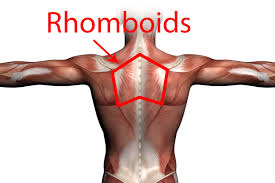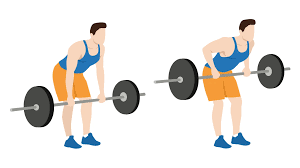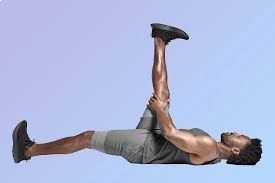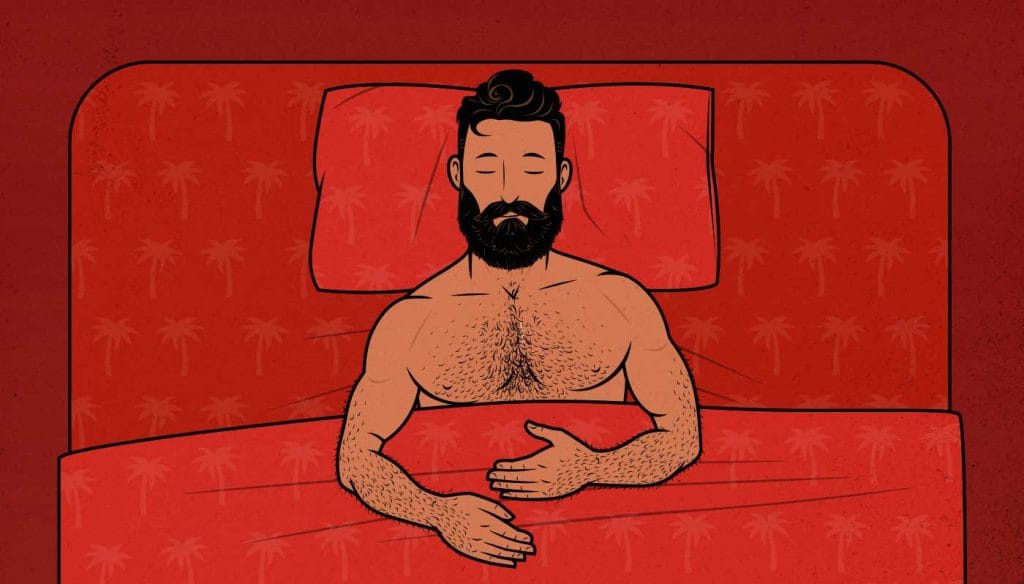Mastering the Back: Build Strong, Wide Lats with These 5 Essential Exercises
The back is one of the most crucial muscle groups in the human body, responsible for posture, strength, and movement. Among the many muscles that make up the back, the latissimus dorsi (lats) are the most prominent and powerful. The lats give the back its width, create the coveted V-taper, and play a major role in pulling movements.
What Are the Muscles In The Back
The back is a complex network of muscles responsible for a wide range of functions, from supporting posture to facilitating movement. It includes several large and small muscles that work together to stabilize the spine, enable shoulder movements, and contribute to overall strength.
Major Muscle Groups in the Back
- Latissimus Dorsi (Lats) – The largest muscles in the back, they give the back its width and are key for pulling movements.
- Trapezius (Traps) – Located across the upper back and neck, the traps help with shoulder movements and spinal stabilization.
- Rhomboids – Found between the shoulder blades, these muscles retract the scapula and contribute to posture.
- Erector Spinae – A group of muscles running along the spine, responsible for extending and stabilizing the back.
- Teres Major and Minor – These muscles assist in shoulder movements, specifically with rotation and adduction.
- Infraspinatus – Part of the rotator cuff, this muscle stabilizes the shoulder and aids in shoulder rotation.
- Levator Scapulae – Located along the neck, this muscle helps elevate the scapula and assists with neck movement.
Each of these muscles plays a crucial role in keeping the body balanced, strong, and mobile. Training them together results in better posture, enhanced strength, and injury prevention.
Latissimus Dorsi
The lats are responsible for shoulder extension, adduction, and internal rotation. These are the muscles that give your back width and are critical for pulling movements.
Exercises
Pull-Ups: Hang from a bar with your hands slightly wider than shoulder-width, pulling your chest to the bar by squeezing your lats.
Lat Pulldown: Sit at a cable machine and pull the bar down to your chest, focusing on engaging your lats.
Barbell Rows: Bend over with a barbell and pull the weight toward your lower chest, squeezing your shoulder blades together.
Dumbbell Rows: With one hand and knee on a bench, pull a dumbbell toward your hip, keeping your back straight.

Trapezius
The trapezius is responsible for moving and stabilizing the shoulder blades and supporting the neck and upper spine. It plays a critical role in shrugging motions and overhead movements.
Exercises
Barbell Shrugs: Stand upright holding a barbell, and shrug your shoulders up toward your ears. Pause at the top, then slowly lower back down.
Upright Rows: Using a barbell or dumbbells, pull the weight up to your chest, leading with your elbows while keeping the weight close to your body.
Face Pulls: Use a cable machine with a rope attachment, pulling it toward your face while keeping your elbows flared outward, focusing on the rear delts and upper traps.

Rhomboids
The rhomboids help retract the shoulder blades, promoting good posture and supporting movements where the shoulder blades move toward the spine.
Exercises
Face Pulls: Excellent for hitting the rhomboids and rear delts.
Seated Cable Rows: Sit at a cable machine and pull the handle toward your torso, focusing on squeezing the shoulder blades together.
Reverse Flyes: Holding dumbbells or using a machine, bend over or sit with your arms extended, bringing them outward in a flying motion to target the rear delts and rhomboids.

Erector Spinae
The erector spinae runs along the spine and is responsible for extending and stabilizing the spine. It plays a crucial role in posture and lower back stability.
Exercises
Deadlifts: The ultimate full-body movement. Stand behind a barbell with feet hip-width apart. Bend down, grip the bar, and stand up by driving through your heels, extending your hips and back.
Hyperextensions: Lie face down on a hyperextension bench, lowering and raising your upper body while keeping your core tight.
Good Mornings: With a barbell on your back, bend forward at the hips while keeping your back flat, and then return to standing.

The importance of a strong back
Building a strong back goes beyond aesthetics. A well-developed back improves posture, preventing rounded shoulders and correcting imbalances caused by overtraining the chest or arms. It supports heavy lifts by stabilizing the upper body, enabling you to lift more weight in exercises like squats, deadlifts, and bench press. Additionally, a strong back helps reduce the risk of injury by providing stability to the spine and shoulders, especially during compound movements. Developing back muscles through consistent training also increases overall strength, leading to greater performance across all your lifts.
Key Back Exercises And How To Do Them
Pull-Ups
Pullups are the iconic back exercise, because its great for beginners and more advanced lifters, target the Lats, biceps, and rhomboids, and they dont require anything other than a stable bar to grab.
Grab a pull-up bar with a pronated or supinated grip. Start from a dead hang, pull yourself up by engaging your lats, aiming to bring your chin above the bar. Lower yourself back down in a controlled manner.
If you can’t do a pullup you can do inverted bodyweight rows


Deadlifts
Deadlifts are a versatile exercise that can be done on leg day or back day. The main muscles used are the erector spinae, traps, lats, hamstrings, and glutes. Depending on your form or the variation of deadlift you do is what muscles you train.
How to Do It: Stand with your feet hip-width apart, with the barbell over the middle of your feet. Bend at the hips and knees to grip the bar with both hands, either overhand or mixed grip. Keep your back flat and your chest up as you lift the bar by extending your hips and knees until standing upright. Lower the bar back down by pushing your hips back and bending your knees. Variations include:
- Sumo Deadlifts: Wider stance targeting the inner thighs.
- Romanian Deadlifts: Focus on hip hinge to target the hamstrings.
Bent-Over Rows
How to Perform: Bend at your hips with your knees slightly bent and your back straight. Row the barbell toward your lower chest, squeezing your shoulder blades together at the top.
Muscles Targeted: Lats, rhomboids, traps.
The key is not to go too heavy, and control the eccentric


T-Bar Rows
How to Perform: Using a T-bar row machine or setup, row the weight toward your chest, keeping your elbows close to your sides. Squeeze your shoulder blades at the top of the movement.
Muscles Targeted: Middle back, lats, rhomboids.
The key is to add a decent amount of weight, and control the eccentric
Seated Cable Rows
How to Perform: Sit with your feet against the footplate and grab the handle with both hands. Pull the handle toward your abdomen, keeping your back straight and your elbows close to your body.
Muscles Targeted: Rhomboids, traps, lats.
The key is to stretch your lats but keep your back in an active position. Don’t round your back unless you’re wanting to train your spinal erectors.

Tips for Building a Balanced Back
To develop a balanced back, it’s essential to include both horizontal and vertical pulling movements in your routine. Vertical pulls like pull-ups and lat pulldowns build width by targeting the lats, while horizontal pulls such as rows build thickness by focusing on the rhomboids and middle back. Prioritize compound lifts for overall muscle development, but also include isolation exercises to fine-tune specific areas. Focusing on the mind-muscle connection, especially with the lats, helps you better activate the targeted muscles, improving muscle growth and definition.
Proper Form and Injury Prevention
Injuries often occur when proper form is neglected. Always ensure that your back is straight and your core is engaged during any back movement. Avoid jerking or using momentum, as this places undue stress on the lower back and can lead to injury. When performing heavy lifts like deadlifts or bent-over rows, focus on engaging the right muscles and keeping the spine neutral. A thorough warm-up and mobility exercises, particularly for the shoulders and hips, will help prevent injury. It’s important to stretch after each session, focusing on the lats, traps, and lower back.

Stretching and Recovery
Stretching is critical for maintaining flexibility and preventing injury. Post-workout, stretch your lats by extending your arms overhead and holding onto a sturdy surface. Stretch your traps by tilting your head to each side and holding the position. Include foam rolling or soft tissue work for the lower back to improve recovery and prevent stiffness. Proper rest and recovery between back sessions are key for muscle growth and injury prevention.

Beginner and Advanced Sample Workouts
Beginner Back Workout:
Lat Pulldown – 3 sets of 12 reps
Seated Cable Rows – 3 sets of 10 reps
Dumbbell Rows – 3 sets of 10 reps per arm
Hyperextensions – 3 sets of 15 reps
Deadlifts (light) – 3 sets of 8 reps
Advanced Back Workout:
Weighted Pull-ups – 4 sets of 8 reps
Barbell Rows – 4 sets of 8 reps
T-Bar Rows – 4 sets of 10 reps
Deadlifts (heavy) – 4 sets of 5 reps
Barbell Shrugs for Traps – 4 sets of 12 reps
Trending Articles:
Do you have any questions?




